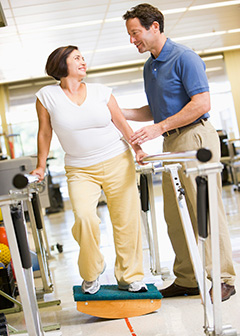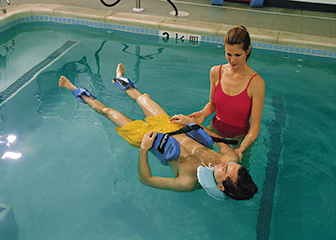Summary

| Quick Facts: Physical Therapist Assistants and Aides | |
|---|---|
|
$37,710 per year
$18.13 per hour |
|
| See How to Become One | |
| None | |
| See How to Become One | |
| 114,400 | |
| 45% (Much faster than average) | |
| 51,100 | |
What Physical Therapist Assistants and Aides Do
Physical therapist assistants and physical therapist aides work under the direction of physical therapists. They help patients who are recovering from injuries, illnesses, and surgeries regain movement and manage pain.
Work Environment
Most physical therapist assistants and aides work in physical therapists' offices or in hospitals. Physical therapist assistants and aides are frequently on their feet and moving as they set up equipment and help care for patients.
How to Become a Physical Therapist Assistant or Aide
Most states require physical therapist assistants to have an associate’s degree from an accredited physical therapist program. Physical therapist aides generally have a high school diploma and receive on-the-job training.
Pay
The median annual wage of physical therapist assistants was $49,690 in May 2010. The median annual wage of physical therapist aides was $23,680 in May 2010.
Job Outlook
Employment of physical therapist assistants is expected to increase 46 percent from 2010 to 2020, much faster than the average for all occupations. Employment of physical therapist aides is expected to increase 43 percent from 2010 to 2020, much faster than the average for all occupations. Demand for physical therapy services is expected to increase in response to the healthcare needs of a growing elderly population.
Similar Occupations
Compare the job duties, education, job growth, and pay of physical therapist assistants and aides with similar occupations.
O*NET
O*NET provides comprehensive information on key characteristics of workers and occupations.
Contacts for More Information
Learn more about physical therapist assistants and aides by contacting these additional resources.










